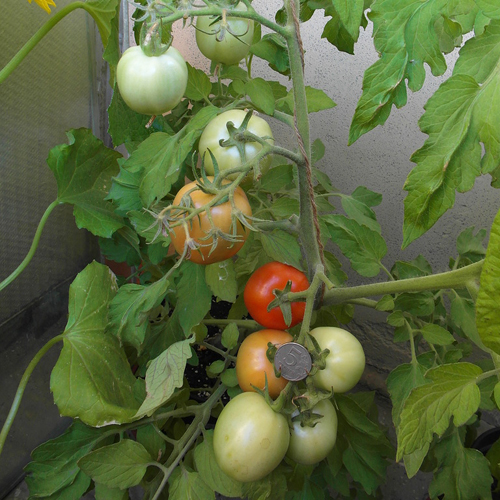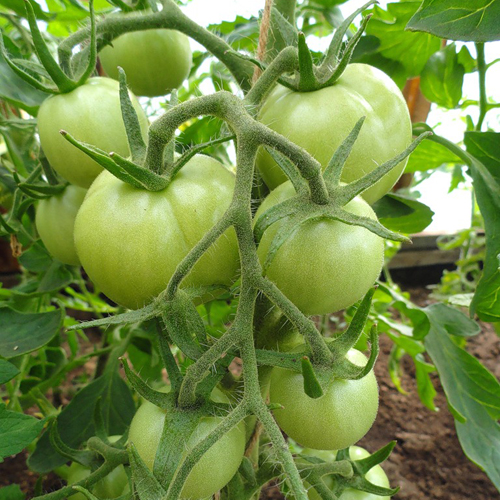Tomato variety Siberian early ripening
In areas of risky farming, tomatoes with an early ripening period are highly valued. For many years of work in this direction, breeders have created many such varieties that manage to give the maximum amount of marketable products in a short growing season. Among the famous varieties - Siberian early ripening. They took him to the Federal State Budgetary Scientific Institution "Federal Scientific Center of Vegetable Growing". The authorship belongs to R.N. Dmitrievich and V. Ya. Bykovsky. In 1955, an application for registration was filed, and in 1959 the tomato was included in the State Register of Breeding Achievements of the Russian Federation. The areas of admission cover almost the entire territory of Russia and include the North-West, North, Volgo-Vyatka, Central, Middle Volga, Ural, West Siberian, East Siberian, Far Eastern regions. The tomato is recommended for growing under plastic covers and in the open field. Not a hybrid.

Description
The plant is a determinant type, short, stocky, 50 to 90 cm high, depending on growing conditions. Low to moderate foliage. The variety has good shoot formation. Leaves are of normal size, dark green. The main stem is strong, bearing 3 to 4 inflorescences. The inflorescence is compact, simple, rarely intermediate. Each fruit cluster contains from 4 to 7 ovaries. The first brush is laid over 6 or 7 leaves. Subsequent - through 1 sheet. The peduncle is articulated.
The fruits of the Siberian early ripening are beautiful, classic rounded or flat-round, the surface is slightly ribbed. Size from medium to large, weight 62 - 114 grams. The skin is thin, glossy. When unripe, the tomato is light green with a dark spot at the stalk. Ripe - bright red, without a spot. The pulp is dense, fleshy, juicy. The number of seed nests is 4. Assessing the taste, the tasters disagreed, and as a result the taste was described as satisfactory. According to reviews, a tomato grown in an open field is much tastier than one grown in a greenhouse. The pulp contains from 4.3% to 5.9% dry matter and 2.5 - 3% total sugar.

Characteristics
- The term of maturation of the Siberian early ripening is indicated by its name. The variety belongs to the early maturing, from the moment of emergence to harvest, 95 - 105 days pass;
- in the open field, the yield of marketable fruits is 289 - 543 c / ha. In the first 2 weeks of fruiting, from 20 to 43% of the total number of set tomatoes matures. Under film shelters, the indicator of marketable yield is 6.3 - 9.5 kg per 1 square meter. Moreover, in the first month of fruiting, almost half of the crop ripens - 2.4 - 5.8 kg per 1 sq. meters;
- the culture adapts well to unfavorable conditions in the open field, even in cold or dry summers, it continues to form ovaries and bear fruit;
- the immunity of the tomato is quite high, especially the plant is resistant to the tobacco mosaic virus and brown spot;
- transportability and keeping quality of fruits are very good, tomatoes do not crack;
- you can use the crop in its natural form, juicy and fleshy fruits are good in salads - this is the main purpose of the Siberian early ripening. Also tomatoes are great for canning, making tomato products - juice, pasta. Good for pickling and pickling.
Agrotechnics
The variety is grown only through seedlings. Sowing is carried out on March 15 - 25. Planting seedlings to a permanent place - May 15 - 25, when the threat of return frosts has passed. Density of placement - 4 - 5 bushes per 1 square meter. Watering is carried out as needed, making sure that the soil is not waterlogged.Top dressing is applied by alternating organic matter and mineral fertilizers. You should not get carried away with nitrogen complexes. Cleanliness in the garden will save you from the invasion of pests, and timely loosening will provide the roots with oxygen. In a greenhouse, the plant can be tied to a support.
Siberian early ripening is a reliable tomato for regions with short and cool summers. Good, and most importantly, stable yield, good taste, disease resistance and fruiting that lasts until the very cold - these advantages made the variety popular. Moreover, you can collect seeds from the most beautiful tomatoes yourself.









I have been growing this variety in the open field for a long time, for about five years that's for sure. It is good in that it forms a little foliage, respectively, and late blight does not develop much on it. However, in a rainy summer, you have to do 2 - 3 treatments for late blight. I cover them only for the first time after landing in open ground, and then all summer, almost until the first frost, they grow without shelter. There are few stepsons (3-4 pcs.), But I still leave them.
The fruits ripen evenly and amicably. With ten bushes at a time, you can get a pretty decent harvest, this year I removed almost 3 buckets of ripe tomatoes from them. By the end of August, this variety pleased me once again - many ovaries formed on the stepsons and they still managed to grow, although they did not have time to ripen.
I can't say anything to taste, for me they are tomatoes, some are sweeter, some are sour. In my opinion, the taste of tomatoes is mainly dependent on nutrients and weather conditions.
I have grown this variety more than once. Our summer is often rainy and cold, but I don't like growing vegetables in greenhouses, I like open ground, so I'm looking for varieties that are early ripening and not capricious. The bushes of the Siberian early ripening are low, I did not tie them up, the yield, I would say, is average, these tomatoes were not affected by diseases in me. The fruits themselves are well-shaped, medium-sized, shiny, even, ripen quite amicably, to taste with a slight sourness, I would like to be sweeter, good in salads, and if preserved, they are perfect for juices and sauces. This tomato is good in that it manages to ripen on the bushes under the conditions of our summer, does not require ripening, is not affected by diseases, therefore, caring for it is simple.